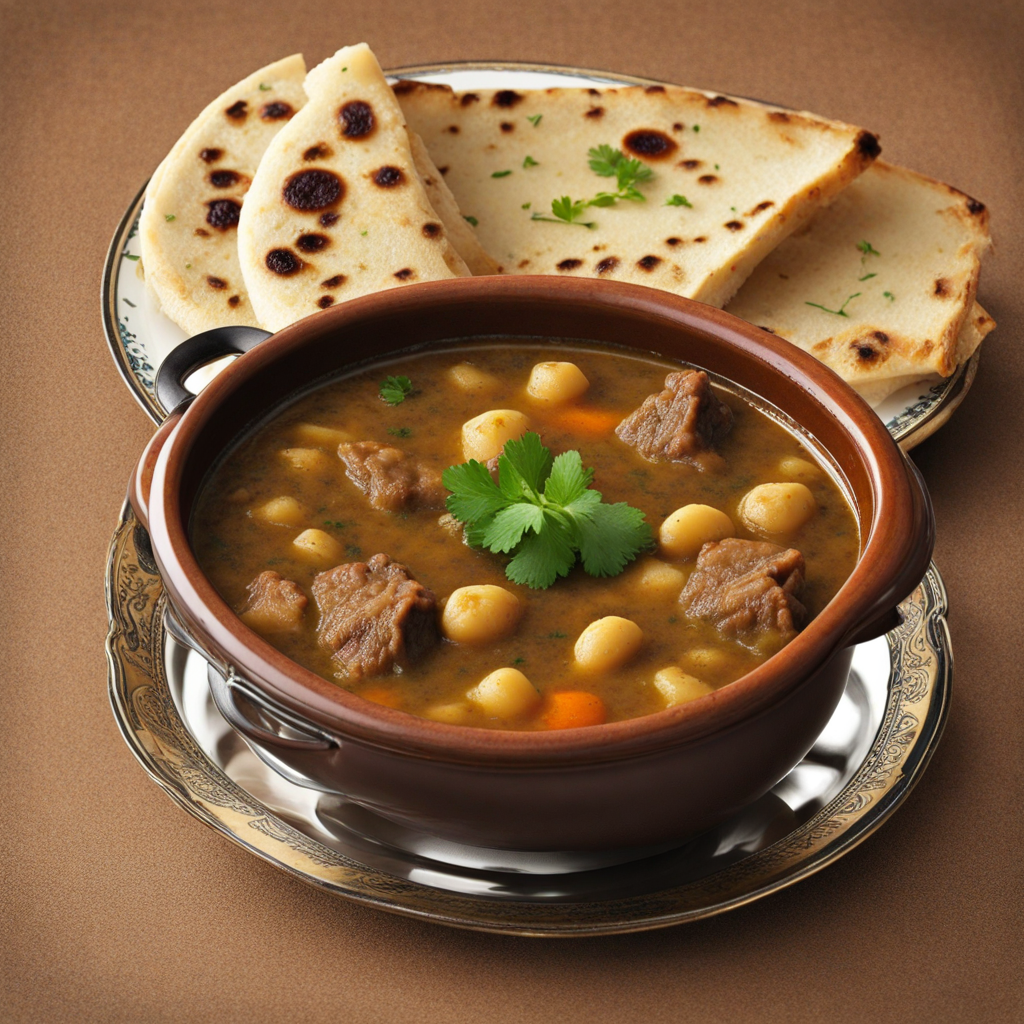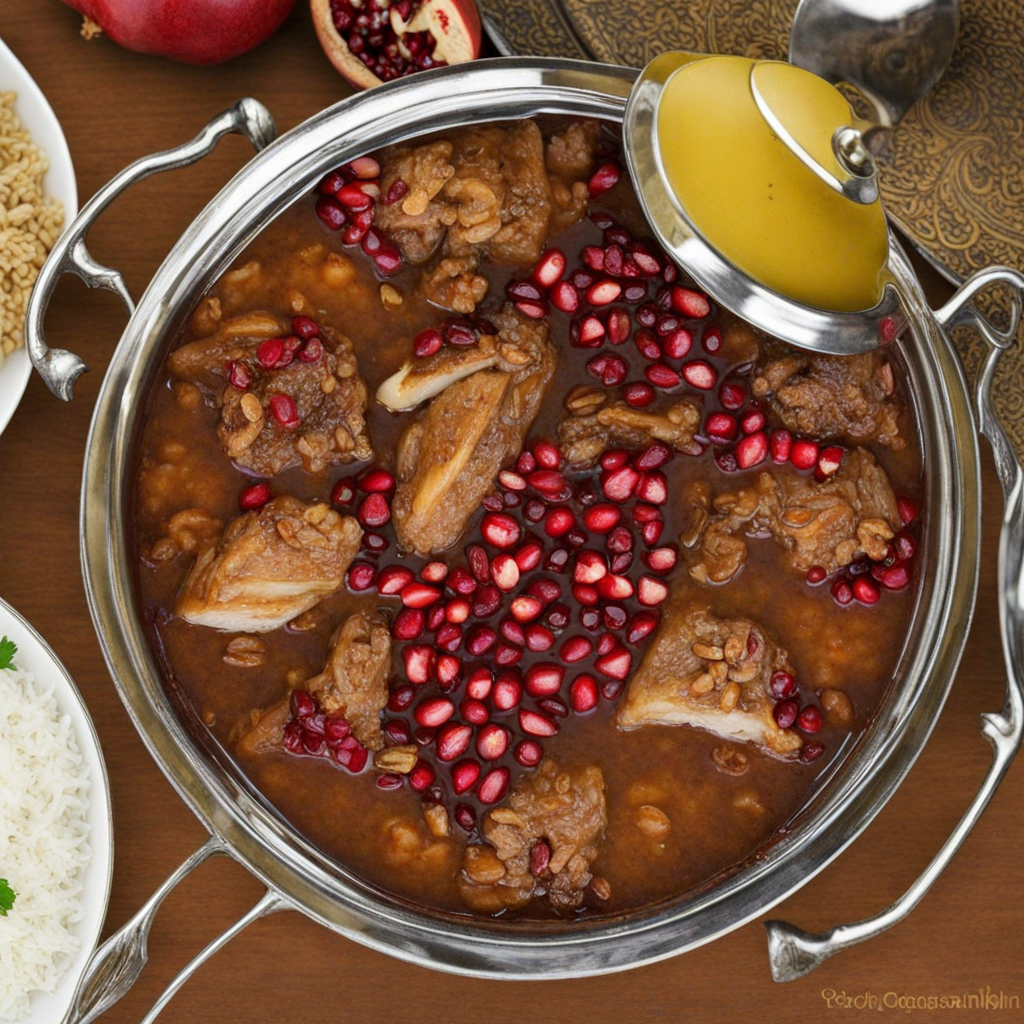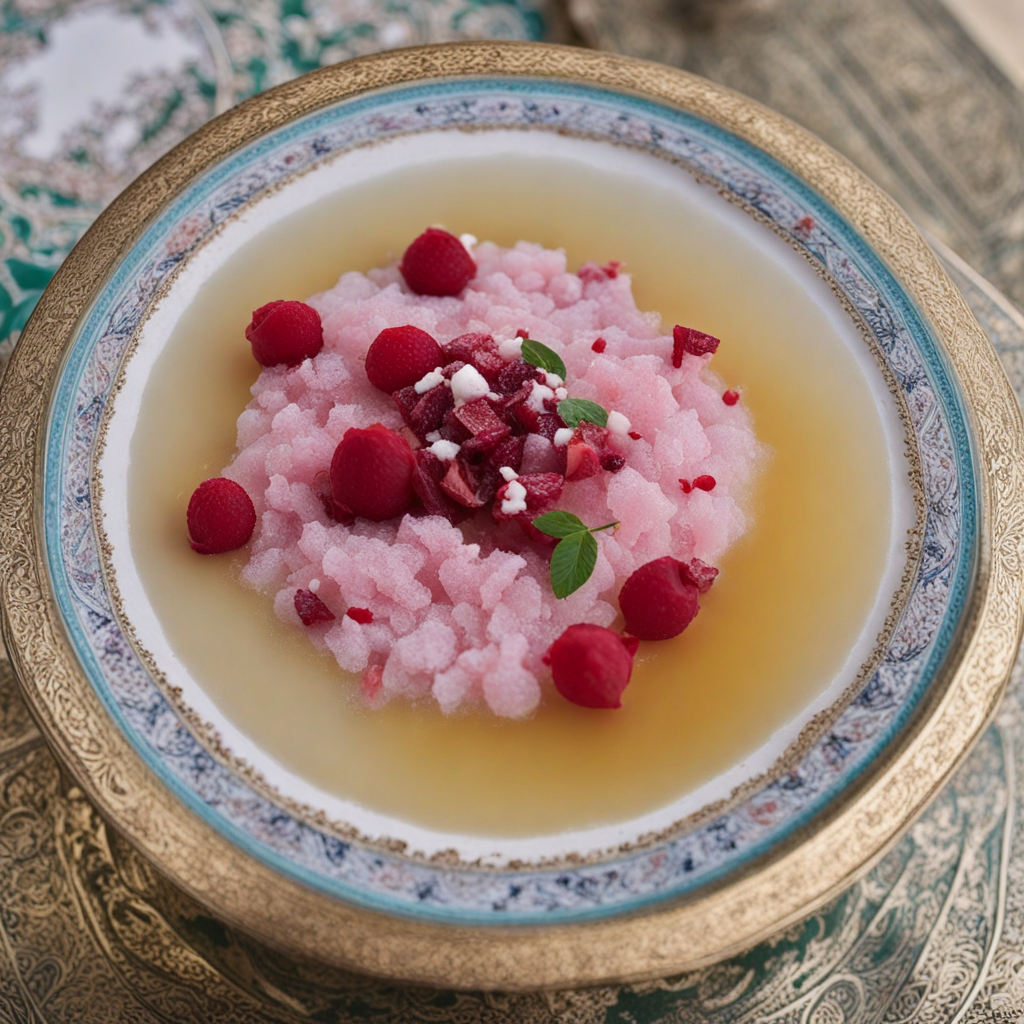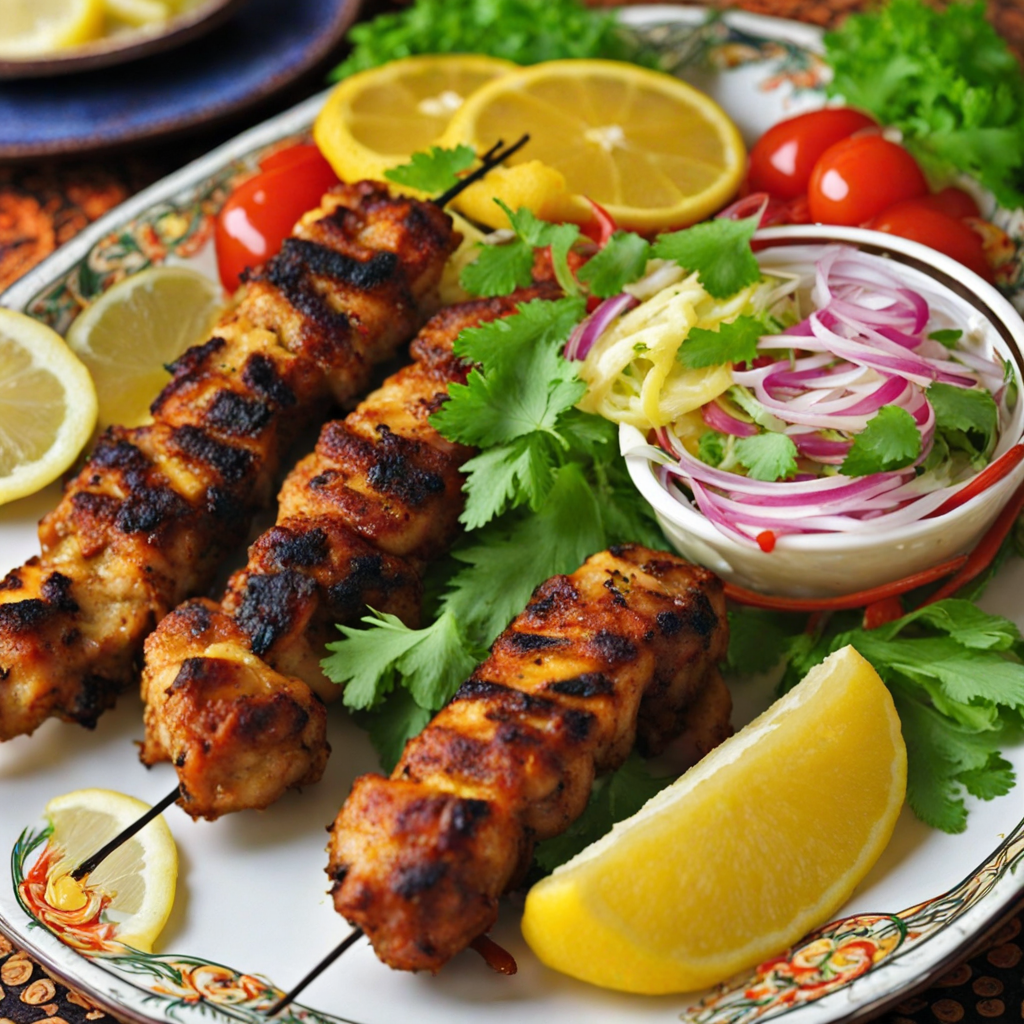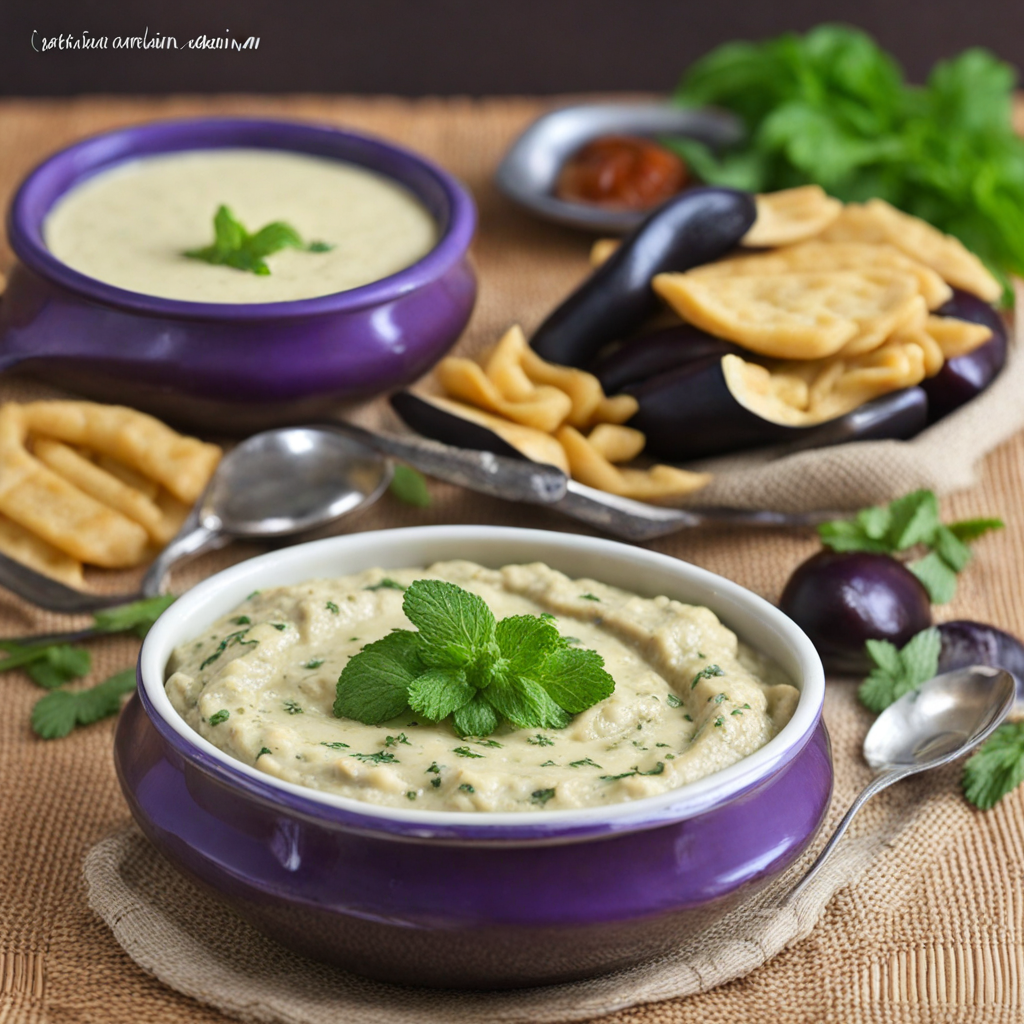Dizi
Dizi, also known as Abgoosht, is a traditional Iranian stew that offers a unique blend of flavors and textures, making it a must-try for any food enthusiast. This hearty dish is typically made with slow-cooked lamb or beef, chickpeas, potatoes, and a variety of fragrant spices, including turmeric and cinnamon. The ingredients meld together beautifully over several hours, resulting in a rich, savory broth that is as comforting as it is flavorful. The meat becomes tender, easily falling apart, while the chickpeas and potatoes provide a satisfying bite that complements the dish's depth.
How It Became This Dish
Origin of آبگوشت آبگوشت, pronounced as "abgoosht," is a traditional Iranian stew that has deep roots in Persian culinary history. The term itself translates to "meat water," which aptly describes its primary components: meat, water, and a variety of flavorful ingredients. The origins of آبگوشت can be traced back to ancient Persia, where communal cooking and eating were integral to social gatherings. It is believed that the nomadic tribes of the region first developed this dish, utilizing readily available ingredients such as lamb or beef, legumes, and sometimes vegetables. The method of slow-cooking meat in water not only maximized flavor but also ensured that the tough cuts of meat became tender, making it a practical dish for families. The earliest documented references to آبگوشت can be found in Persian literature, particularly in the works of poets and scholars from the medieval period. It was often mentioned in connection with feasts and celebrations, signifying its importance as a meal that brought people together. The dish’s simplicity and heartiness made it a staple in the diets of both the rich and poor, illustrating its versatility and widespread appeal throughout the ages. \n\n Cultural Significance The cultural significance of آبگوشت extends beyond its role as a food item; it is a symbol of Persian hospitality and communal living. Traditionally, آبگوشت is served in a manner that encourages sharing and togetherness. The dish is often presented in a large pot, allowing diners to serve themselves. This communal aspect of dining fosters a sense of unity, as families and friends gather around the table to enjoy the meal together. Moreover, the preparation of آبگوشت is often considered an art form in Iranian households. The selection of ingredients, the timing of cooking, and the method of serving all contribute to the dish's reputation. In many families, recipes for آبگوشت are passed down through generations, each adding their own twist to the classic preparation. This continuous evolution showcases the dish's adaptability and the personal touch that families imbue into their cooking. \n\n Ingredients and Preparation The basic ingredients of آبگوشت typically include lamb or beef, chickpeas or lentils, potatoes, onions, and a variety of spices such as turmeric, black pepper, and sometimes saffron. The preparation begins with browning the meat and onions in a pot, followed by the addition of water and legumes. The dish is then left to simmer for several hours, allowing the flavors to meld and the meat to become incredibly tender. In more contemporary variations, vegetables such as tomatoes and eggplants may also be added, enhancing the flavor profile. One of the unique aspects of آبگوشت is the way it is traditionally served. Diners often separate the broth from the solids; the broth is enjoyed as a soup, while the meat and vegetables are served alongside flatbread, typically lavash or sangak. This method of serving not only respects the dish's history but also allows for a more interactive dining experience. \n\n Regional Variations As with many traditional dishes, regional variations of آبگوشت exist throughout Iran. In the northern provinces, for instance, the use of local herbs and spices can alter the flavor dramatically, while in the southern regions, the incorporation of spicy peppers can give the dish a distinctive kick. In cities like Tehran, آبگوشت may include additional ingredients such as dried limes or even pomegranate, highlighting the diverse culinary practices across the country. Furthermore, the dish's presentation and accompanying sides can differ. In some areas, it may be served with a side of rice, while in others, it is complemented by fresh herbs and pickles, known as "torshi." This adaptability to local tastes and ingredients has allowed آبگوشت to maintain its relevance in Persian cuisine, evolving while still respecting its roots. \n\n Modern-Day Significance In modern Iran, آبگوشت continues to hold a cherished place in the hearts and homes of many. It is often prepared for family gatherings, special occasions, and even during the colder months, providing warmth and comfort. The dish has also gained popularity among the Iranian diaspora, serving as a reminder of home and heritage for those living abroad. As Iranian communities grow in various parts of the world, the preparation and consumption of آبگوشت become acts of cultural preservation, allowing individuals to connect with their roots. Additionally, the rise of food tourism has brought renewed interest in traditional Iranian cuisine, with آبگوشت being a highlight on many restaurant menus. Chefs and culinary enthusiasts often experiment with the dish, introducing modern techniques and presentations while still honoring its traditional essence. This blend of old and new ensures that آبگوشت remains not only a staple but also a point of pride in Iranian culinary culture. \n\n Conclusion In summary, آبگوشت is much more than just a dish; it encapsulates the essence of Iranian culture, history, and communal spirit. From its humble origins in ancient Persia to its status as a beloved comfort food today, it reflects the rich tapestry of Iranian life. Whether enjoyed in a bustling city or a quiet family home, آبگوشت serves as a reminder of the ties that bind people together through food, tradition, and shared experiences. As it continues to evolve, this iconic stew remains a testament to the enduring legacy of Persian culinary heritage.
You may like
Discover local flavors from Iran


